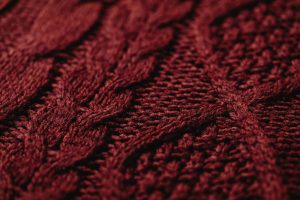Sustainable Style: Transforming Wardrobes with Eco-Conscious Designs
Sustainability has become a growing concern in recent years, with more and more people looking for ways to reduce their environmental impact. One area that has gained particular attention is fashion. The clothing industry is the second largest polluter in the world, right after the oil industry. Fast fashion has made it easy and affordable to constantly update our wardrobes, but at what cost? This is where sustainable style comes in – a movement that focuses on transforming our wardrobes with eco-conscious designs. Let’s explore how we can create a more sustainable fashion industry and transform our wardrobes in the process.
The Rise of Sustainable Fashion
The term “sustainable fashion” has gained popularity in recent years, but what exactly does it mean? Sustainable fashion is about creating clothing in an environmentally and socially conscious way, considering the entire lifecycle of a garment – from production to consumption to disposal. It’s about reducing waste, using eco-friendly materials, and supporting fair labor practices.
In the past, sustainable fashion was seen as a niche market, and eco-friendly clothing was often associated with unflattering, boring designs. However, this has changed dramatically in recent years. The rise of sustainable fashion has brought about a plethora of stylish, eco-friendly options. From high-end luxury brands to affordable, everyday fashion, sustainable style is now more accessible than ever.
Eco-Conscious Designs
Organic and Natural Materials
One of the key aspects of sustainable fashion is the use of organic and natural materials. This means using materials that are free from harmful chemicals and pesticides, which are often used in conventional cotton farming. Organic cotton, for example, uses significantly less water to grow than conventional cotton, making it a more environmentally friendly option. Other natural materials, such as hemp and linen, are also gaining popularity in the fashion industry due to their sustainable properties.
Recycled and Upcycled Materials
Another way fashion brands are incorporating sustainability into their designs is by using recycled and upcycled materials. This is where waste materials, such as plastic bottles and discarded clothing, are transformed into new materials and turned into clothing. This not only reduces the environmental impact of the fashion industry but also helps to reduce the amount of waste that ends up in landfills.
Fair Trade and Ethical Practices
Sustainability is not only about the environment but also about the people behind our clothing. Fair trade and ethical practices are becoming increasingly important in the fashion industry. This means ensuring that garment workers are paid fair wages and working in safe conditions. By supporting brands that prioritize fair trade and ethical practices, consumers can help create a more sustainable fashion industry.
Tips for Building a Sustainable Wardrobe
Now that we know more about sustainable fashion and eco-conscious designs, how can we apply this to our own wardrobes? Here are some tips to help you build a more sustainable wardrobe:
Invest in Quality Pieces
One of the main ways to be more sustainable in our clothing choices is to invest in quality pieces that will last longer. This means opting for well-made, timeless pieces that won’t go out of style. By avoiding fast fashion trends, we can reduce our consumption and the amount of clothing that ends up in landfills.
Shop Secondhand
Another way to build a sustainable wardrobe is to shop secondhand. Thrifting, swapping clothes with friends, or buying from vintage or consignment stores are all ways to give clothing a second life. Not only is this more sustainable, but it also allows for unique, one-of-a-kind finds.
Care for Your Clothing
Properly caring for our clothing can also lengthen their lifespan. This includes washing clothes only when necessary, following care instructions, and repairing clothes instead of throwing them away when they have a small tear or missing button.
The Future of Sustainable Style
The fashion industry still has a long way to go in terms of sustainability, but there is no doubt that the movement towards eco-conscious designs and sustainable fashion is gaining momentum. As consumers become more aware of the impact of their clothing choices, the demand for sustainable fashion will continue to grow. By supporting brands that prioritize sustainability and making small changes in our consumption habits, we can all play a role in creating a more sustainable fashion industry and transforming our wardrobes for the better.











